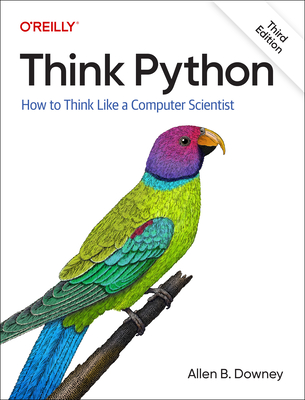Introduction to Java for Non-C Programmers Training in Albany
|
We offer private customized training for groups of 3 or more attendees.
|
||
Course Description |
||
| This four day course is designed to provide a solid foundation in Java
for programmers without syntax experience in a C-based language. Besides
learning the basic structure and syntax of the language, students will
also learn object-oriented principles and how they are applied in Java
applications. In addition, this course covers more advanced features of
the language such as abstract classes, interfaces, generics, packages,
and exception handling. Finally, students will learn two foundational
API libraries: I/O streams and collections. Additional appendices on
threads, J2EE, and Eclipse are provided for further study.
Course Length: 4 Days
Course Tuition: $2250 (US) |
||
Prerequisites |
|
| Professional programming experience in a high level language, such as COBOL and Visual Basic. This course assumes no experience in a C-based language such as C, C++, or C#. | |
Course Outline |
|
Getting Started with J2SE
Datatypes and Variables
Operators and Expressions
Control Flow
Methods
Object-Oriented Programming
Objects and Classes
Using Java Objects
Inheritance in Java
Packages
Exception Handling
Input/Output Streams
Core Collection Classes
Appendix A - Introduction to Threads
Appendix B - J2EE Overview
Appendix C - Eclipse |
Course Directory [training on all levels]
- .NET Classes
- Agile/Scrum Classes
- AI Classes
- Ajax Classes
- Android and iPhone Programming Classes
- Azure Classes
- Blaze Advisor Classes
- C Programming Classes
- C# Programming Classes
- C++ Programming Classes
- Cisco Classes
- Cloud Classes
- CompTIA Classes
- Crystal Reports Classes
- Data Classes
- Design Patterns Classes
- DevOps Classes
- Foundations of Web Design & Web Authoring Classes
- Git, Jira, Wicket, Gradle, Tableau Classes
- IBM Classes
- Java Programming Classes
- JBoss Administration Classes
- JUnit, TDD, CPTC, Web Penetration Classes
- Linux Unix Classes
- Machine Learning Classes
- Microsoft Classes
- Microsoft Development Classes
- Microsoft SQL Server Classes
- Microsoft Team Foundation Server Classes
- Microsoft Windows Server Classes
- Oracle, MySQL, Cassandra, Hadoop Database Classes
- Perl Programming Classes
- Python Programming Classes
- Ruby Programming Classes
- SAS Classes
- Security Classes
- SharePoint Classes
- SOA Classes
- Tcl, Awk, Bash, Shell Classes
- UML Classes
- VMWare Classes
- Web Development Classes
- Web Services Classes
- Weblogic Administration Classes
- XML Classes
- Introduction to Spring 6, Spring Boot 3, and Spring REST
15 December, 2025 - 19 December, 2025 - See our complete public course listing
Java Programming Uses & Stats
|
Difficulty
|
Popularity
|
Year Created 1995 |
|
Pros
Most Commonly Used:
Great Career Choice:
Android Apps Development:
It Can Run On Any Platform:
Great Supporting IDE's: |
Cons
Uses a Lot of Memory:
Difficulty in Learning:
Slow Start Up Times:
Verbose and Complex Code:
Commercial License Cost: |
| Java Programming Job Market |

Average Salary
|

Job Count
|

Top Job Locations
New York City |
|
Complimentary Skills to have along with Java Programming
- If you are an experienced Java developer, learning a complimentary language to Java should come much more naturally. As an example JetBrains recently created the Kotlin programming language which is officially supported by Google for mobile development. Kotlin compiles to Java bytecode and runs on the JVM; it's purported to address many of Java's shortcomings... |






